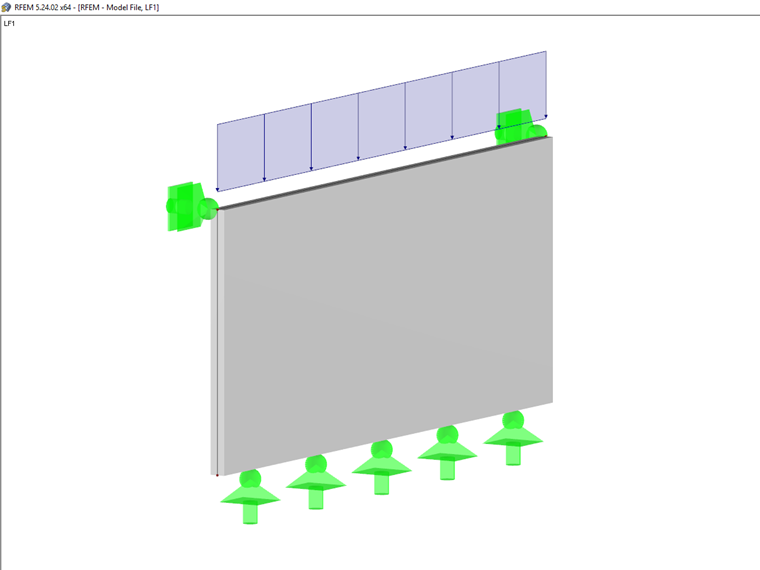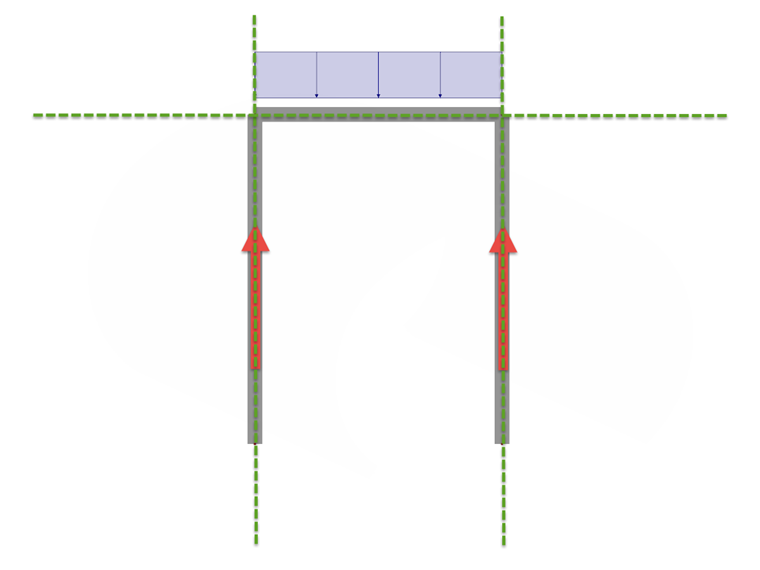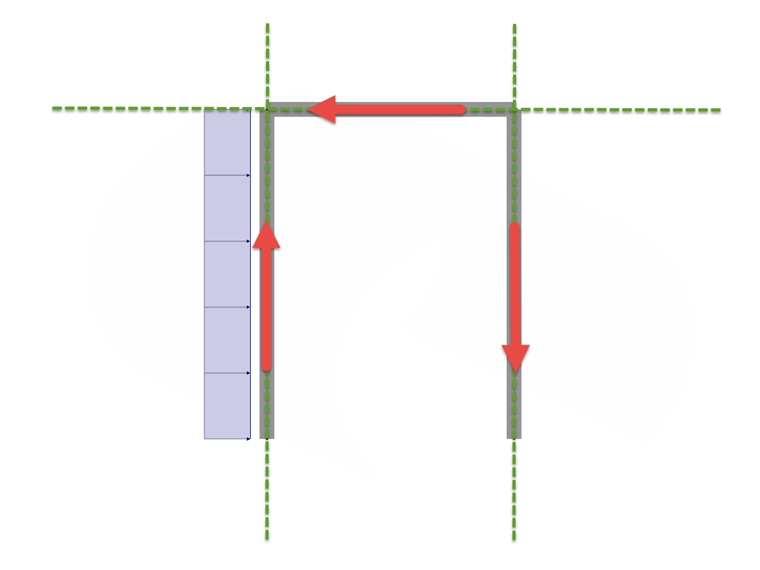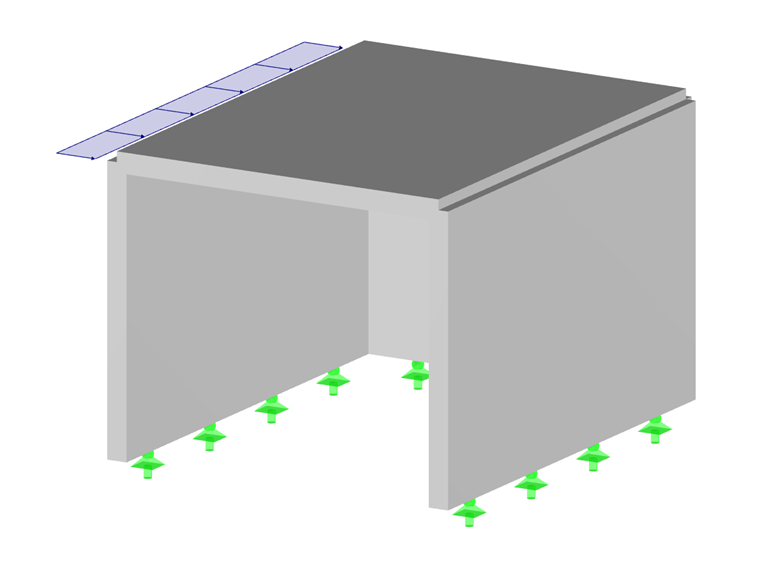Features
The plate properties are in its shape and the possible forces to be transferred.
The shape is planar, while the possible forces to be transferred are mainly the axial forces in the direction of the surface plane. Shear forces and bending moments are not taken into account.
An example of a plate structure is a surface structure consisting of wall panels that transfer the vertical and horizontal forces in their plane (Image 01), or ceiling slabs that transfer the horizontal forces in their plane.
Application
The plates are often used in residential buildings as well as in building construction in general, usually in the form of walls.
On one hand, the walls are used to transfer all vertical loads as axial forces into the foundation; on the other hand, they ensure the horizontal stiffening of the entire structure.
Therefore, most buildings are structurally designed in such a way that the shear walls provide stability of the structure against all horizontal loads, such as wind or earthquake.
Since (wall) plates only absorb forces in their plane, the lines of action of all walls in the structural ground plan must intersect at least two points to ensure the stability of the entire structure.
The simplest example is a garage consisting of three walls. The ground plan has a U-shape and the lines of action of the wall plates (that is, the horizontal forces of the walls) intersect at two points.
Image 02 shows the horizontal loading in the direction of the two walls that are parallel to each other. In this case, the system acts like a single-span beam, whereby the transverse wall does not absorb any forces in the other direction.
In Image 03, the external load acts in the direction of the single transverse wall, and thus absorbs the entire load. The resulting rotation of the structural system must be compensated by the other two walls.
Slabs act primarily as plates, but it is necessary to allow for a plate effect to transfer/couple the horizontal external loads.
Plates in RFEM and RSTAB
In RFEM, walls and ceiling slabs can be modeled as surfaces by definition, or simulated via a nodal coupling.
The structural frame analysis software RSTAB also provides powerful tools to simulate the plates.
See Also
- Plate Supporting Structure
- Shell Structure
- Plate Structure
- Membrane Structures



.png?mw=760&hash=30240dc02e7948155b5fadc33b03e3d8008096bc)

































.png?mw=600&hash=49b6a289915d28aa461360f7308b092631b1446e)

